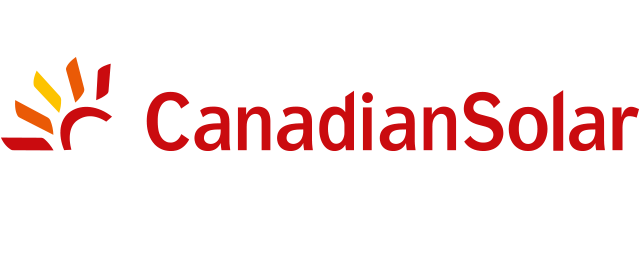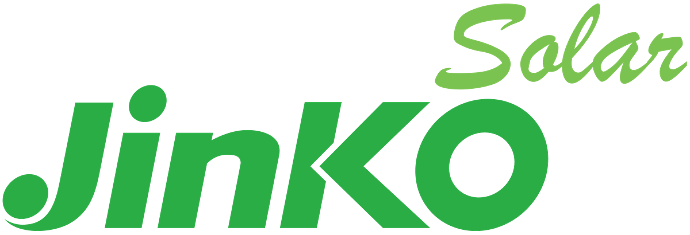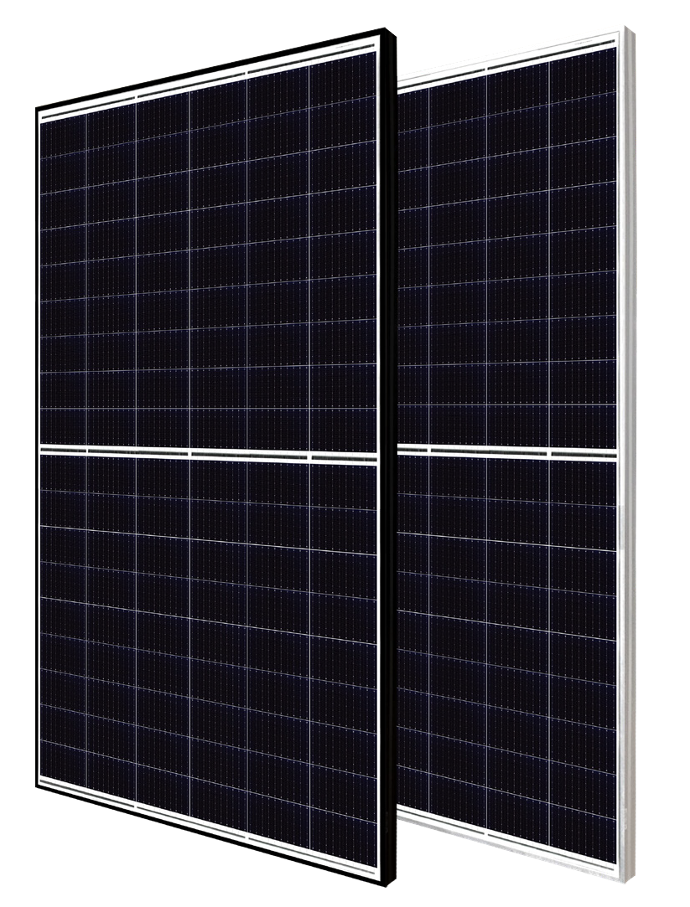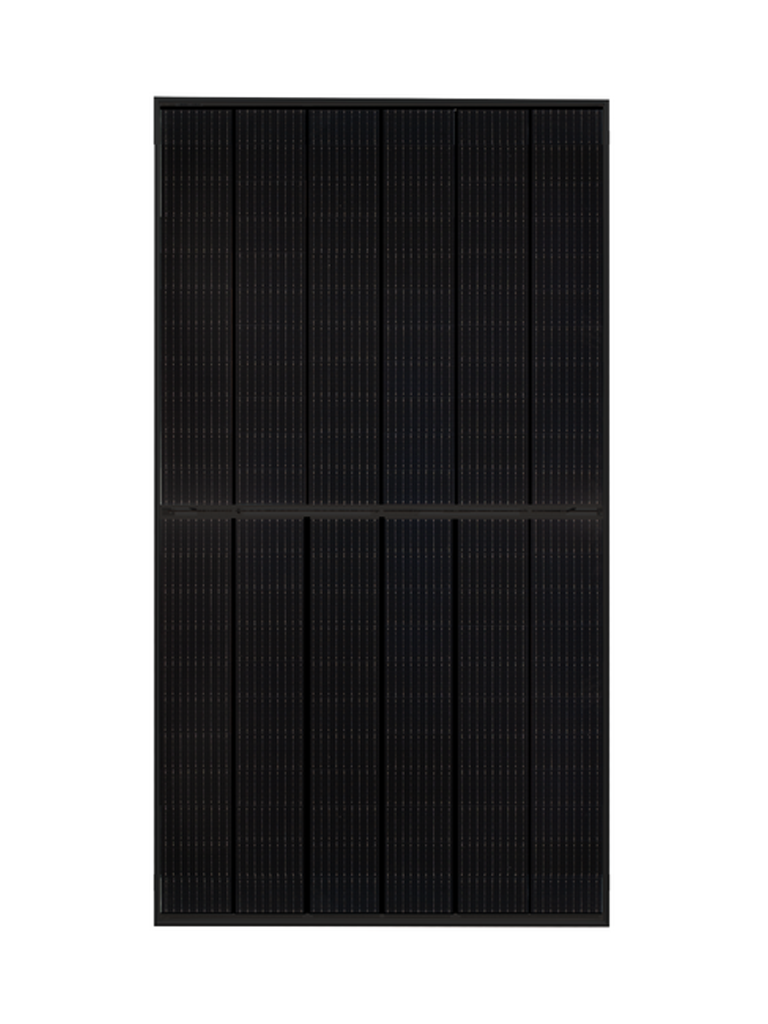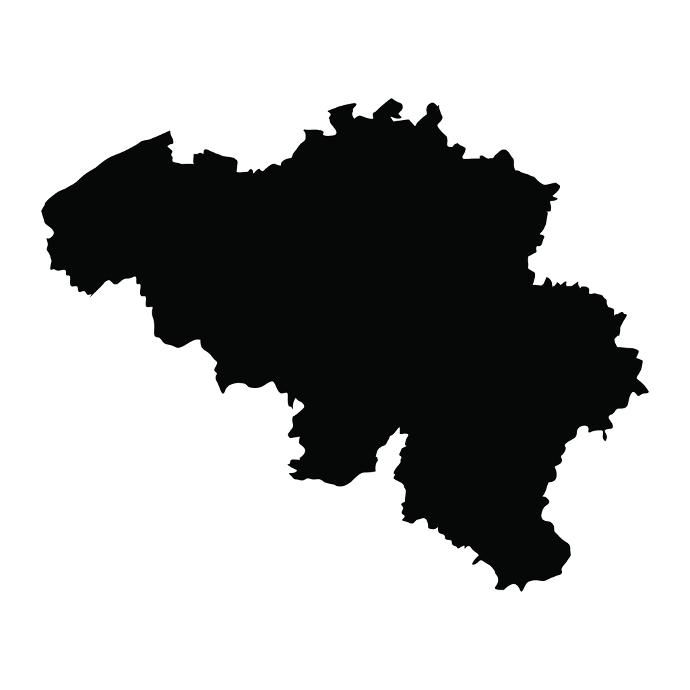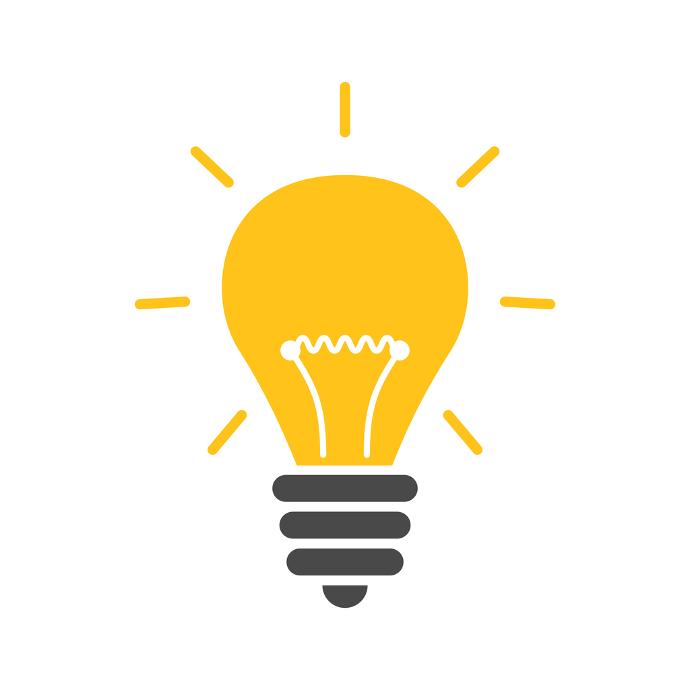How a photovoltaic system works ?
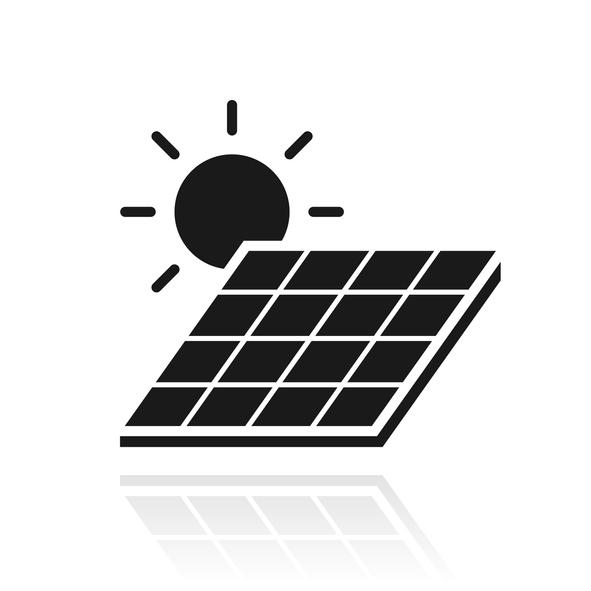
Your solar panels generate direct current using sunlight, an endless source of energy.

The inverter converts the direct current into alternating current that can be used by your devices.
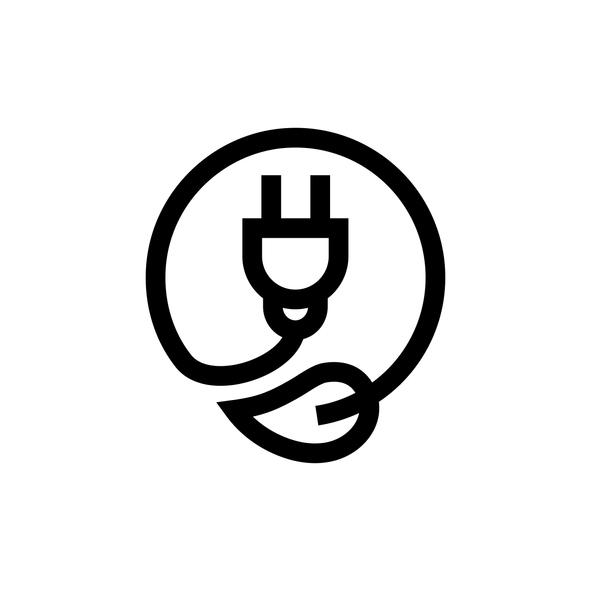
You consume your own electricity, and the surplus is bought back by your energy supplier.
Discover our photovoltaic solar panels
À ne pas louper
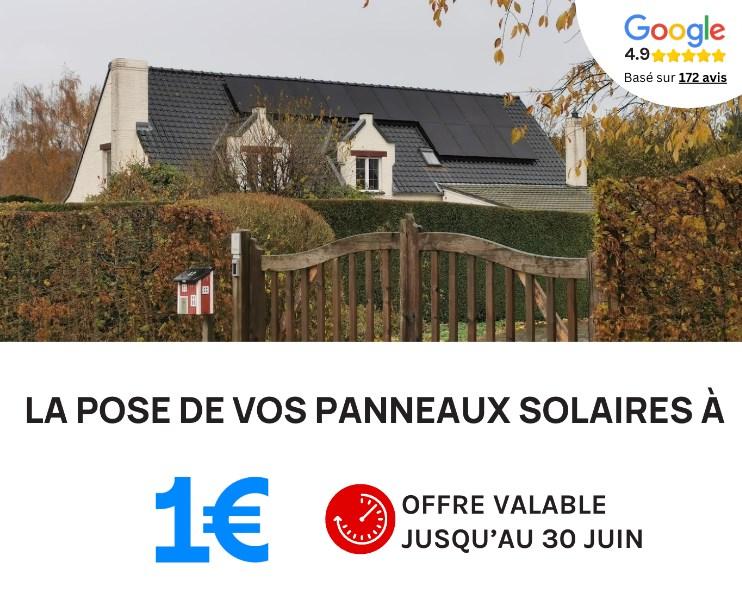
Why pay for electricity when the sun produces it ?
Produce and consume your own electricity.
Store your extra production in a battery.
Feed what you don't use back into the grid, so that your energy supplier can buy back your electricity.
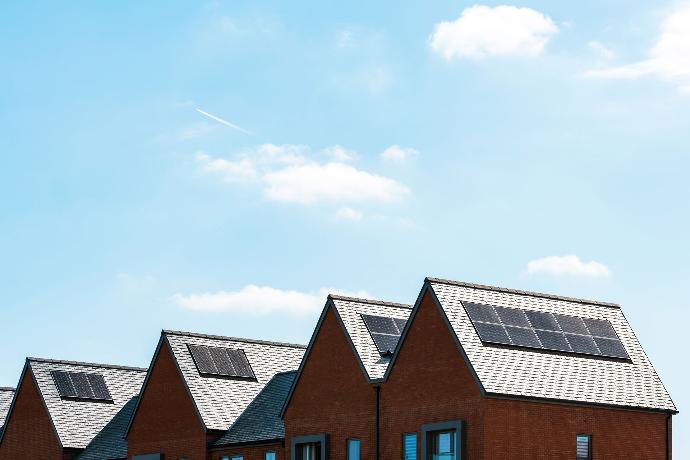
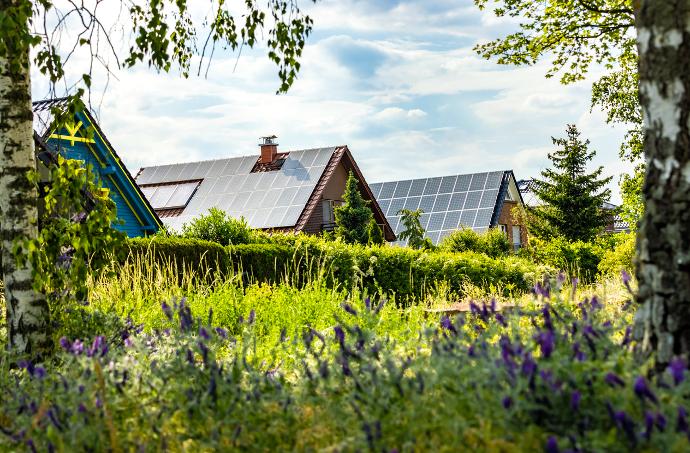
A sustainable and
profitable investment
A photovoltaic system reduces your energy bills over the long term. After 25 years, a solar panel still produces more than 80% of its initial performance.
Your photovoltaic panels will also give you extra points to improve your EPB score, and your property will increase in value.
Installing photovoltaic panels: simple administrative procedures
There's nothing complicated about investing in a photovoltaic system. Neopower takes care of everything, from drawing up your quotation to installing your system and registering it with your grid operator.

Frequently asked questions
A photovoltaic system converts solar energy into electricity. It consists mainly of photovoltaic solar panels, a mounting system and an inverter. Here's how it works :
- Solar panels are installed on a roof or plot of land, ideally well exposed to the sun. They are made up of photovoltaic cells, which are capable of converting sunlight into electricity.
- When the sun's rays reach the photovoltaic cells, they create a direct current (DC).
- The inverter is a device that transforms the direct current produced by the solar panels into alternating current (AC) that can be used by electrical devices.
- The alternating current is then fed into the home or business power grid, where it is used to power electrical devices.
- If the photovoltaic system produces more energy than is required, the excess is fed back into the grid, or can be stored in an electrical energy storage system, such as a battery, for later use when solar energy is no longer available at the time when electricity consumption is needed, enabling self-consumption rather than paying for electricity from the grid.
Investing in photovoltaics in Belgium, even without the advantages of a meter that turns upside down and without specific incentives, is still a profitable option.
Solar panels continue to be a wise investment, with a potential return of up to 8% depending on your situation. This performance is significantly higher than that of conventional savings accounts, which generally offer little or no return.
By self-consuming the green electricity you produce, you reduce your energy bills considerably and sustainably. By installing a domestic battery, you can even increase your self-consumption rate by up to 75%.
Selling surplus electricity is another way of making the system profitable. Feed-in tariffs vary from one energy supplier to another, but buying back your surplus production will lower the overall cost of your electricity bill..
To maximize the performance of solar panels, it's important to consider factors such as the technology of the photovoltaic cells, the power of the system, the location, orientation and inclination of the panels. A south-facing installation will need fewer panels than a northeast-facing installation to produce the same amount of kWh.
To sum up, despite the end of the upside-down meter and the absence of specific incentives, investment in photovoltaics in Belgium remains profitable thanks to a very attractive return on investment linked to the optimization of self-consumption and the sale of surplus electricity.
Production and productivity are two different terms used to measure the performance of a photovoltaic installation.
Production refers to the total amount of electricity generated by photovoltaic panels over a given period, usually measured in kilowatt-hours (kWh). Production depends on a number of factors, including the power of the installation, the amount of available sunlight, the orientation and inclination of the panels, the temperature, the quality of the panels and the overall efficiency of the system.
Productivity is a measure of the performance of a photovoltaic system. It expresses the quantity of electricity produced per unit of installed power, generally measured in kilowatt-hours per kilowatt-peak (kWh/kWp). Productivity takes production into account, but relates it to installed power. This makes it possible to compare the performance of different solar power plants of different sizes.
In short, production measures the total amount of electricity generated, while productivity measures the efficiency of an installation in terms of the amount of electricity produced per unit of installed power.
Several parameters can influence the photovoltaic production of a photovoltaic installation, the main ones being :
- Solar irradiation/sunshine rate : photovoltaic production depends directly on the amount of sunlight available. Regions with more sunshine will produce more solar electricity than regions with less sunshine.
- Panel orientation and inclination angle : the position and orientation of your solar panels can have a significant impact on energy production. Panels should be ideally oriented to optimize their exposure to the sun, with an optimal inclination according to your geographical latitude.
- Temperature : photovoltaic panels are more efficient at lower temperatures, which means that production can be affected by high temperatures. It's important to ensure that panels are well ventilated to avoid overheating.
- Shading : even a small amount of shade on your solar panels can significantly reduce energy production. It is therefore important to ensure that the panels are placed in a place where they are not shaded or overheated.
- Panel quality : the quality of solar panels can vary considerably, and inferior panels will produce less energy than superior ones.
- Overall system efficiency : the efficiency of a photovoltaic system depends on many factors, such as the quality of inverters and cables, the design of the installation, regular maintenance, etc.
It's important to understand how these different parameters can affect the photovoltaic output of your solar system, in order to maximize its efficiency.
Shade sources are one of the main challenges for photovoltaic panel installations, as they can significantly reduce solar energy production. The main sources of shading are :
- Trees : trees can create shadows that shift during the day depending on the time of day and the season. Tree leaves can also settle on the panels, reducing energy production.
- Buildings : buildings can create permanent shadows on the panels.
- Antennas and pylons : these structures can create permanent shadows on the panels.
- Clouds : clouds can block sunlight and reduce energy production.
- Power generation facilities : nearby power generation facilities, such as wind turbines, can create permanent shadows on photovoltaic panels.
It is essential to take potential sources of shading into account when designing the solar panel installation, and to choose an appropriate location to maximize energy production. We can also recommend solutions to minimize the effects of shading, such as the use of microinverters or optimizers for each panel.
The ideal time to invest in photovoltaics in Belgium depends on a number of factors, such as installation costs, available incentives and benefits, the amount of sunshine in your region, the price of electricity and your energy consumption.
Today, since the energy crisis, it's generally accepted that investing in photovoltaics, with or without incentives, is a future-proof investment that always pays off in the long term. Once the installation has paid for itself, this type of investment will reduce your energy bills for good, increase the value of your home and, above all, give you peace of mind in the face of an uncertain future.
You bet! Although Belgium isn't known for being a very sunny country, it nevertheless has enough sunshine to make a photovoltaic panel installation profitable. It's also important to note that the profitability of a photovoltaic installation depends on a number of factors, including the surface area available to install the panels, the orientation and inclination of the installation, the quality of the panels and inverters, as well as the costs of installation and sometimes maintenance (pollution or heavy pollen).
The number of photovoltaic panels needed to cover your consumption depends on a number of factors, such as your geographical location, the orientation of your roof, the surface area available for installation, the power of the panels in Watt-peak, your budget, and of course, the consumption to be covered.
Our quotations are always based on your needs and personal situation.
There are several important criteria to consider when choosing your photovoltaic panels :
- Efficiency : the efficiency of photovoltaic panels is measured by the percentage of solar energy they can convert into electricity. The higher the efficiency, the higher the yield of your system. The most efficient panels are sometimes a little more expensive.
- Quality : the quality of photovoltaic panels is important, as it affects the durability and performance of the system. We recommend choosing top-quality panels from a recognized brand (ideally N-type) to maximize service life and minimize the risk of failure.
- Warranty : it's important to check the warranty offered with photovoltaic panels. Most manufacturers offer a performance warranty that guarantees the level of energy production over a given period. The longer the warranty, the greater the manufacturer's confidence in the quality of its product.
- Geographical location : your geographical location, orientation and any shaded areas affect the amount of solar energy you can collect per panel, and therefore the size and efficiency of the panels or inverter you choose.
-
Budget : photovoltaic panels vary considerably in price, so your budget will be an important factor to take into account when choosing your panels.
Neopower will guide and advise you in your choice.
The lifespan of a photovoltaic panel depends on a number of factors, such as manufacturing quality, installation conditions, climatic conditions and maintenance practices.
In general, photovoltaic panel manufacturers guarantee a minimum performance of 80% for 25 years. This does not mean that the panel will no longer function after this period, but rather that its performance may diminish slightly over time.
The average lifespan of a photovoltaic panel is around 25 to 30 years, but many panels can last well beyond this period. Some solar panels installed over 40 years ago continue to operate with very good performance.
Don't forget that while photovoltaic panels can last a long time, other solar system components, such as inverters, may have a shorter lifespan and require periodic replacement.
An inverter is a piece of electronic equipment used to convert the direct current produced by solar panels into alternating current (AC), which can be used to power electrical devices in a home or building. There are so-called central inverters for all the panels (which are then installed in series, with the panel that produces the least determining the power of the whole line), and there are micro inverters (1 per panel, ideal for shading part of the installation or for installations with fewer than 5 or 6 panels).
Solar panels produce electricity in direct current (DC), but most household electronic devices require AC power. This is where the inverter comes in. When the solar panels produce DC electricity, the solar inverter converts it into AC to power electrical devices.
Inverters are a key component of residential and commercial solar energy systems, and can also be used in large-scale solar energy projects, such as solar farms. Inverters are available in a range of sizes and power ratings, and the choice will depend on the size of the photovoltaic installation, the amount of electricity to be converted, and whether or not there are any shading areas. In the last case, a microinverter may be recommended instead of a central inverter, or the central inverter may need to be combined with optimizers for shaded panels.
Occasionally, a property may not be suitable for a photovoltaic project. Since the workability of a photovoltaic installation depends on a number of factors, such as accessibility to the roof from the street or garden, the type and age of the roof covering, the route the cables will have to take, and the height and condition of the building, we prefer to refuse a project rather than take any risk to our teams or to your home.
Read more in our blog
Do you have a question about our photovoltaic solar panels? Would you like to receive a free estimate ?
